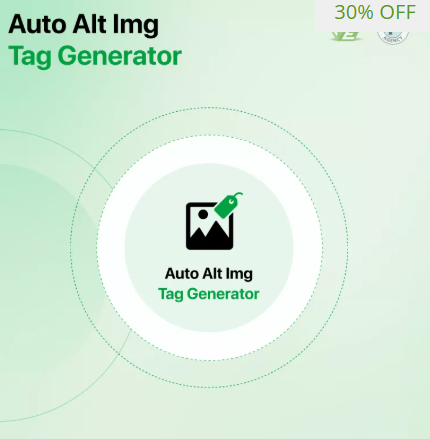How to Optimize SEO Alt Tags in PrestaShop for Better Rankings

In the mobile-first eCommerce landscape, search engine visibility is no longer optional—it’s essential. While most store owners focus on product titles and meta descriptions, one powerful yet often ignored element is the SEO Alt Tags PrestaShop. These tags not only boost accessibility but also help search engines understand your images—especially important for Google Image Search.
In this guide, you’ll learn why alt tags matter, how to apply them properly in PrestaShop, and strategies to ensure they contribute effectively to your SEO performance.
What Are SEO Alt Tags and Why Do They Matter?
SEO alt tags (also known as “alternative text”) are HTML attributes added to images. Their primary function is to describe the content of an image to users who cannot see them—such as visually impaired visitors or search engine crawlers.
For PrestaShop merchants, using optimized alt tags can:
-
Improve image SEO and visibility in search results
-
Increase organic traffic through image searches
-
Enhance website accessibility (important for compliance)
-
Boost overall page relevance and keyword context
-
Improve mobile loading with descriptive lightweight content
When done right, alt tags serve both humans and search engines—enhancing UX and improving crawlability.
Where to Add SEO Alt Tags in PrestaShop
In PrestaShop, every product image can have a custom alt tag. Here's how to add or edit them:
-
Go to your PrestaShop admin panel
-
Navigate to Catalog > Products
-
Choose a product and click Edit
-
Go to the Images tab
-
Upload or select an image
-
In the Caption or Alt text field, enter your keyword-rich description
-
Save changes
This caption becomes the alt attribute of the image on the front end.
Best Practices for Writing SEO-Friendly Alt Tags
To get the most value from your alt tags, follow these tips:
-
Keep it descriptive and specific
Bad:Image123.jpg
Good:Red cotton t-shirt with front pocket -
Include relevant keywords
Use your target keyword naturally, like “organic skincare moisturizer jar” -
Avoid keyword stuffing
Don’t write: “red shoes red shoes red shoes”—this harms your SEO -
Limit alt text to 125 characters
Screen readers cut off longer descriptions -
Don’t repeat text from product name
Add new context instead -
Describe the function for icons or buttons
Example:“Add to cart icon”
Optimizing Alt Tags for Mobile SEO
Google places significant weight on mobile-first indexing. Here's how your alt tags help on mobile:
-
On mobile, images often load before text—alt tags help establish context quickly
-
Lightweight image attributes boost loading speed when using lazy loading
-
Helps screen readers used by visually impaired mobile users
-
Alt tags become especially important for image-rich mobile layouts
Be sure your PrestaShop theme is responsive and retains alt attributes on all image sizes, including thumbnails and mobile-optimized images.
Automating SEO Alt Tag Optimization in PrestaShop
If your store has hundreds of products, editing alt tags manually can be time-consuming. Fortunately, you can use PrestaShop SEO modules or automation tools to apply alt text sitewide.
Recommended modules include:
-
PrestaShop SEO Expert – Automatically adds alt tags based on product names and categories
-
SEO Images Optimizer Module – Scans all your images and fills missing alt attributes
-
PrestaShop Meta Tags Generator – Also supports alt tag generation as part of the broader SEO toolkit
Make sure the tool allows custom rule-setting so you’re not blindly applying duplicate text.
Image Naming vs. Alt Tags: What’s the Difference?
Some merchants confuse image file names with alt tags. Both matter for SEO, but they serve different purposes.
-
Image File Name:
blue-denim-jacket.jpg→ used in image indexing -
Alt Tag:
"Men’s blue denim jacket front view"→ displayed if image doesn’t load or for screen readers
To maximize SEO, you should optimize both file names and alt tags with keyword-rich descriptions.
How to Audit SEO Alt Tags in PrestaShop
Here’s how you can check your current alt tag performance:
-
Use Chrome DevTools:
-
Right-click an image > Inspect
-
Check if the
<img>tag has analtattribute
-
-
Use SEO tools like:
-
Screaming Frog
-
Ahrefs Site Audit
-
Semrush
-
Sitebulb
-
These tools can list missing alt tags across your entire site.
-
Use accessibility tools such as Wave or Lighthouse to ensure alt tags are accessible and readable.
Common Mistakes to Avoid
Avoid these common SEO errors when adding alt tags in PrestaShop:
-
Leaving the alt tag field blank
-
Copy-pasting the same alt text across multiple images
-
Using alt text that’s too vague (“image1,” “product photo”)
-
Keyword stuffing (e.g., “buy laptop laptop laptop”)
-
Writing long sentences—keep it brief and direct
Good SEO is about context and clarity, not clutter.
Example: Before vs. After Optimization
| Before Alt Tag | After Optimized Alt Tag |
|---|---|
photo.jpg |
Women’s floral summer dress – back view |
shoes.png |
Men’s brown leather oxford shoes on white base |
img123.png |
Organic face cream with aloe vera in glass jar |
Final Thoughts
Optimizing SEO Alt Tags in PrestaShop is one of the simplest yet most impactful SEO strategies you can apply—especially for image-rich eCommerce stores. Not only does it improve accessibility and load-time clarity, but it also significantly increases your visibility in image search results.
When implemented with a responsive, mobile-first layout, well-crafted alt tags enhance both user experience and your overall SEO performance. Don’t overlook them—optimize them.
- Art
- Causes
- Crafts
- Dance
- Drinks
- Film
- Fitness
- Food
- Games
- Gardening
- Health
- Home
- Literature
- Music
- Networking
- Other
- Party
- Religion
- Shopping
- Sports
- Theater
- Wellness


